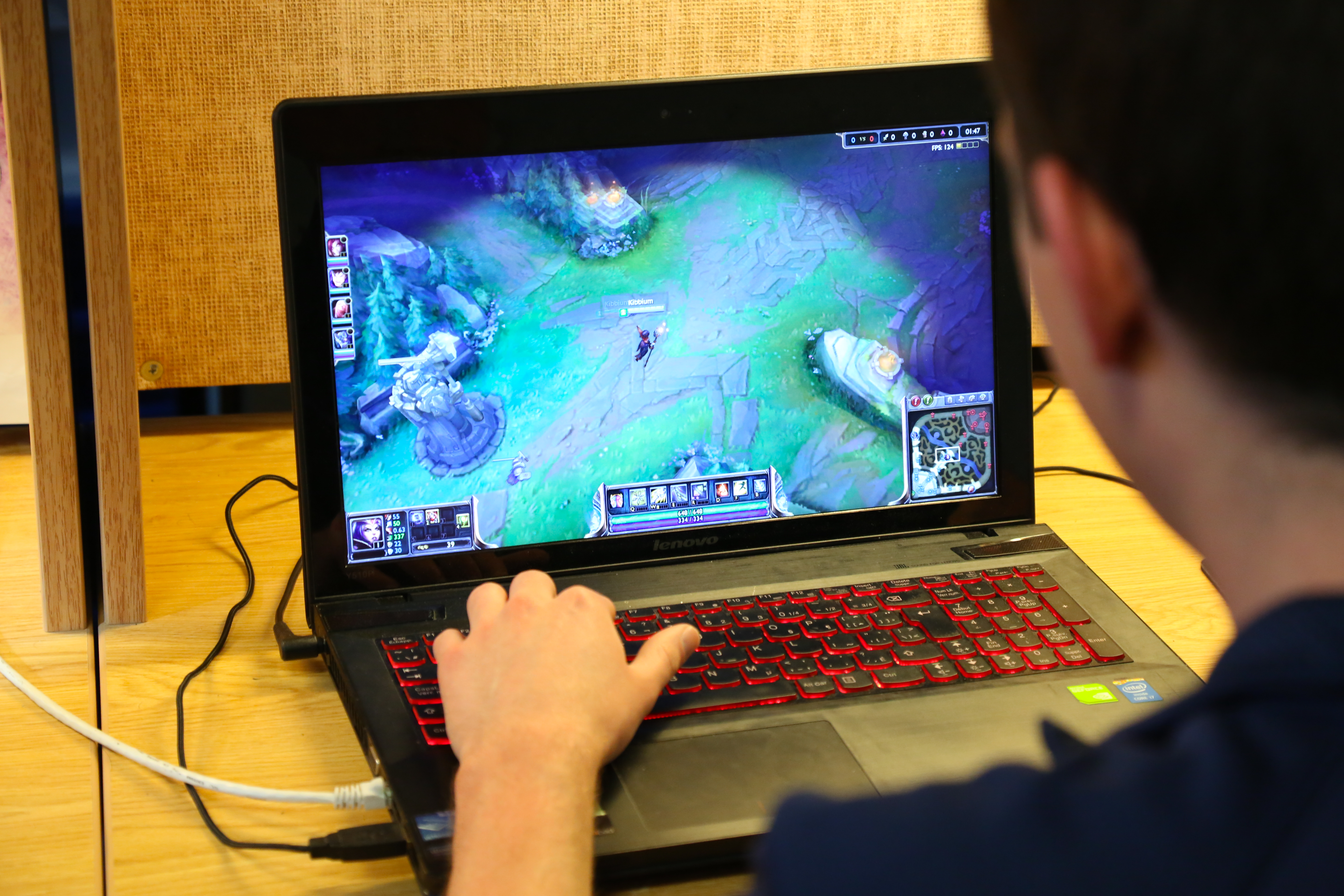by Laura Billingsley ’04
Competition and collaboration are strong among video game fans.
Students join together to compete, practicing strategy, perfecting maneuvers and honing individual skills. They’re also having fun and building community. This could be a description of any traditional sports team, but it also applies to a new kind of activity: esports
League of Legends is an example of an esport. Played on computers, the video game requires teams to engage with a complex world and compete to rack up victories. League, as it’s known to fans, is so popular worldwide that its tournaments have been shown on ESPN channels. The game is especially prevalent among college students, including those on Central’s campus.
Daniel Dankert ‘16 is a League player at Central. He says the game is “insanely fun.” Dankert is one of the skilled players who has achieved “Level 30,” which is the gateway for participating in competitive, ranked play. The game’s leveling system allows players to earn points, progressing until they reach the coveted Level 30. Dankert says it took him about four months of regular play to reach the threshold.
The basic premise of League is to battle your way through a fantasy world—it’s known as a MOBA (multiplayer online battle arena). Teams of five players join together to compete, and each game takes from about 20 minutes to over an hour. Each player takes on the role of a character, with specific abilities and strengths, and characters must work together to defeat other teams. The game is free to play but is supported by “micro-transactions,” which allow players to purchase items within the game.
Though players can be located anywhere in the world, Dankert says it’s more fun when teams can congregate in one room. The political science major and his friends often get together in a dorm room in Gaass Hall for a League session. On a regular basis, Dankert plays with about 15 different Central students, though he knows many more players on campus.
Esports Take Off
League has surpassed numerous other games in popularity, and in 2014 its parent company, Riot Games, said 27 million people play the game daily, while 67 million people play the game every month. The competitive culture around the game is part of what drives its popularity.
“League of Legends transcends traditional video gaming, as they have managed to create a sport-like atmosphere with professional teams facing off every single week during the competitive season,” Dankert says. The World Championship is watched by millions worldwide. In 2013, 32 million fans viewed the final game—that’s more people than watched Game 7 of the 2013 NBA Finals.
The rise in the popularity of esports has even led to the establishment of teams on college campuses, with some larger schools going so far as to make League a varsity sport, complete with athletic scholarships. Many other schools have official clubs that compete in a variety of tournaments throughout the year.
At Central, an official League club may not be far off. This spring, Steven Kibby ‘16 and Gavin Macdonald ‘16 decided to fulfill their vision of creating a League club on campus. They have submitted all the paperwork and hope to officially start meeting in fall 2015.
“We wanted to find a way to connect all the players on campus,” Kibby says. “It’s a way to have some fun and meet with other people who have a similar interest.”
In addition to connecting with others on campus, the club will allow students to practice teamwork, diligence and problem solving—all necessary skills to compete successfully in League, and in life.


